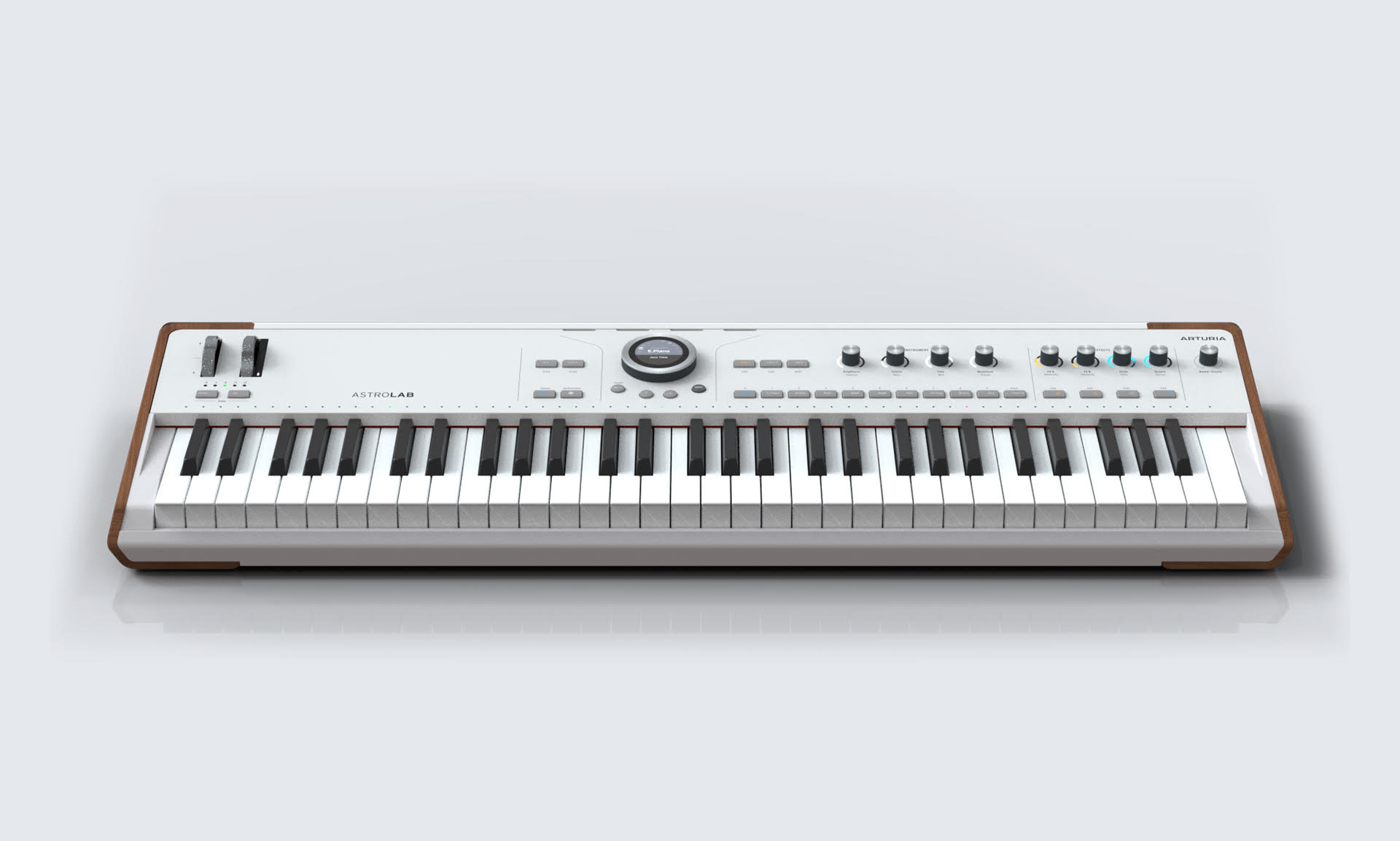
Arturia AstroLab
The development of this instrument truly felt like a journey to the stars - at least that's how long it was supposed to take. Many years ago, I met with Arturia founder and visionary Frédéric Brun for a brainstorming weekend at Lake Geneva. It was winter and after a short walk in the beautiful old town of Geneva, we settled down in the bar of our hotel to sketch out the first ideas for a visionary keyboard. With “Origin”, Frédéric already wanted to create an instrument that would house the well-known Arturia software emulations of classic synthesizers as a stand-alone instrument, back in the earlier 2000's. The result was a kind of “Realizer” (for those of us who can still remember this fantastic concept by Wolfgang Palm / PPG from the early 80s); - a kind of controller that allowed the linking and direct manipulation of various classic synthesizers. For Frédéric, however, the complexity of this concept was aimed at too few potential users.

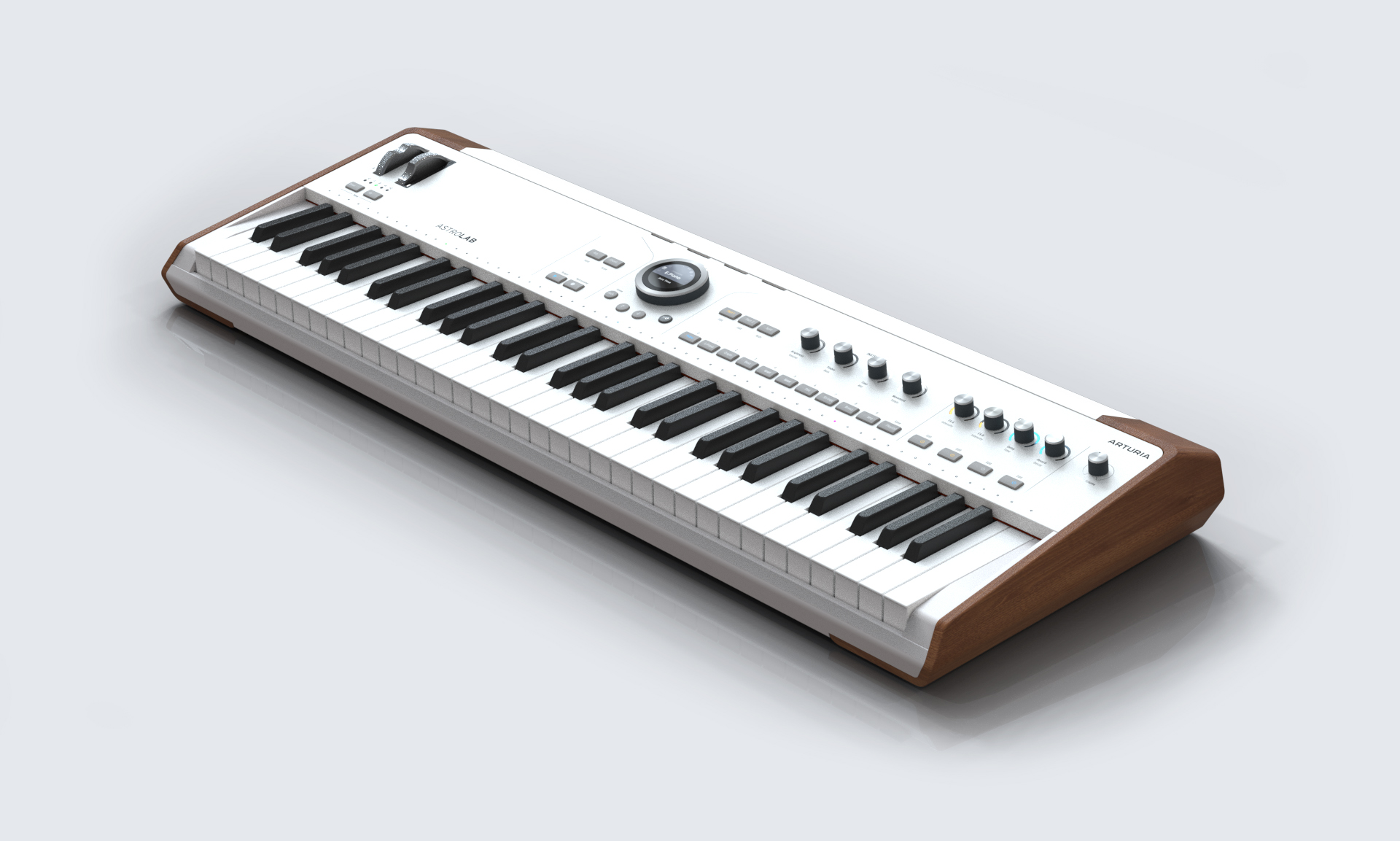
With AstroLab, the aim was to create an instrument that was easy to understand and operate, which also serves as a stand-alone container for the current Arturia software suite. However, the operation, sound selection and manipulation should be very simple and easy to understand. And this despite the enormous range of functions that the Arturia software instruments offer per se. Technically, a controller was created for which the detailed programming of sounds is carried out in the usual, screen-supported way. However, the sound designer decides in advance which parameters are important for his sound creation - and are therefore defined for direct access by the musician. This de-stresses the user interface - and confronts the user with only a few, but very effective manipulation options - per sound!
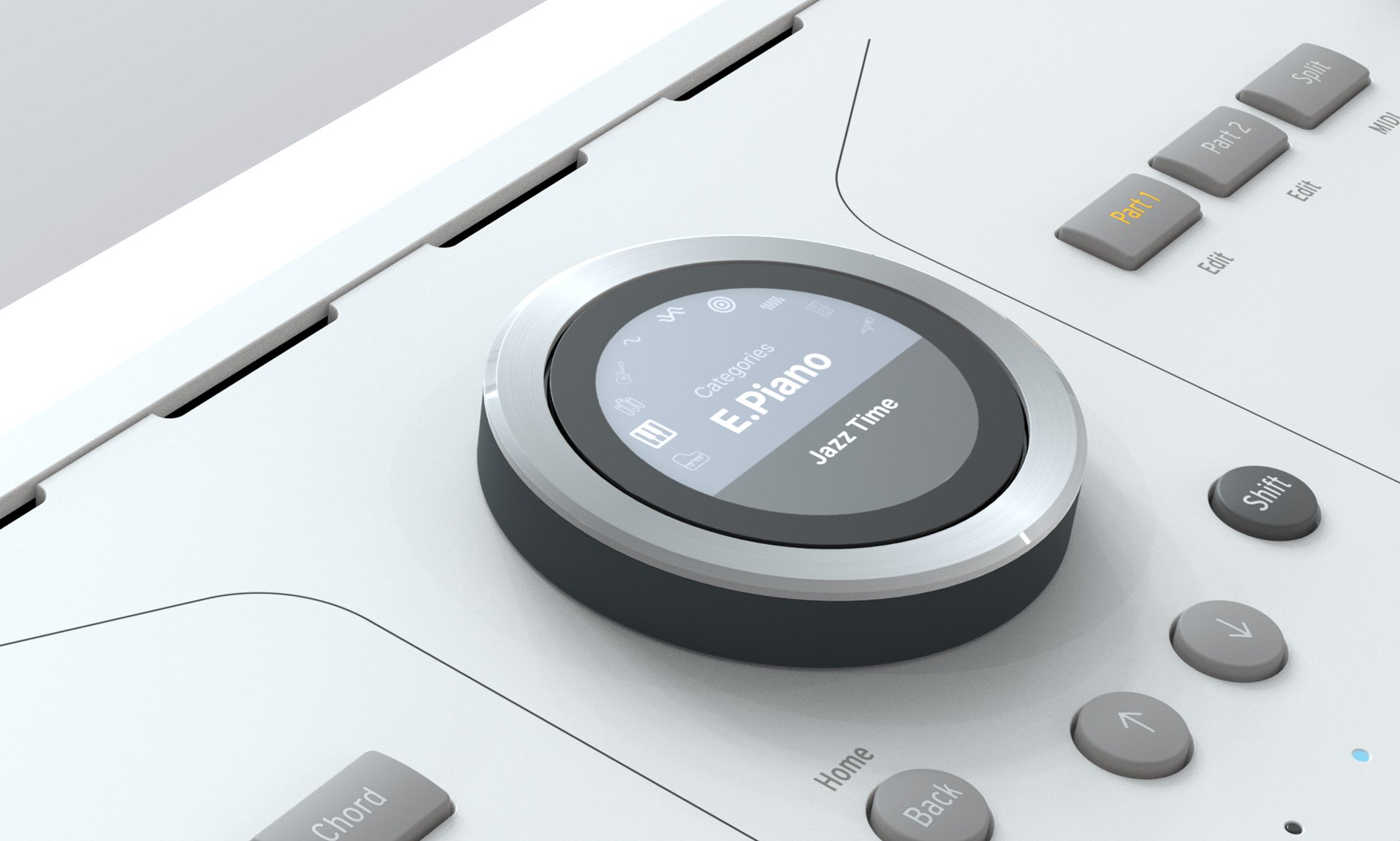
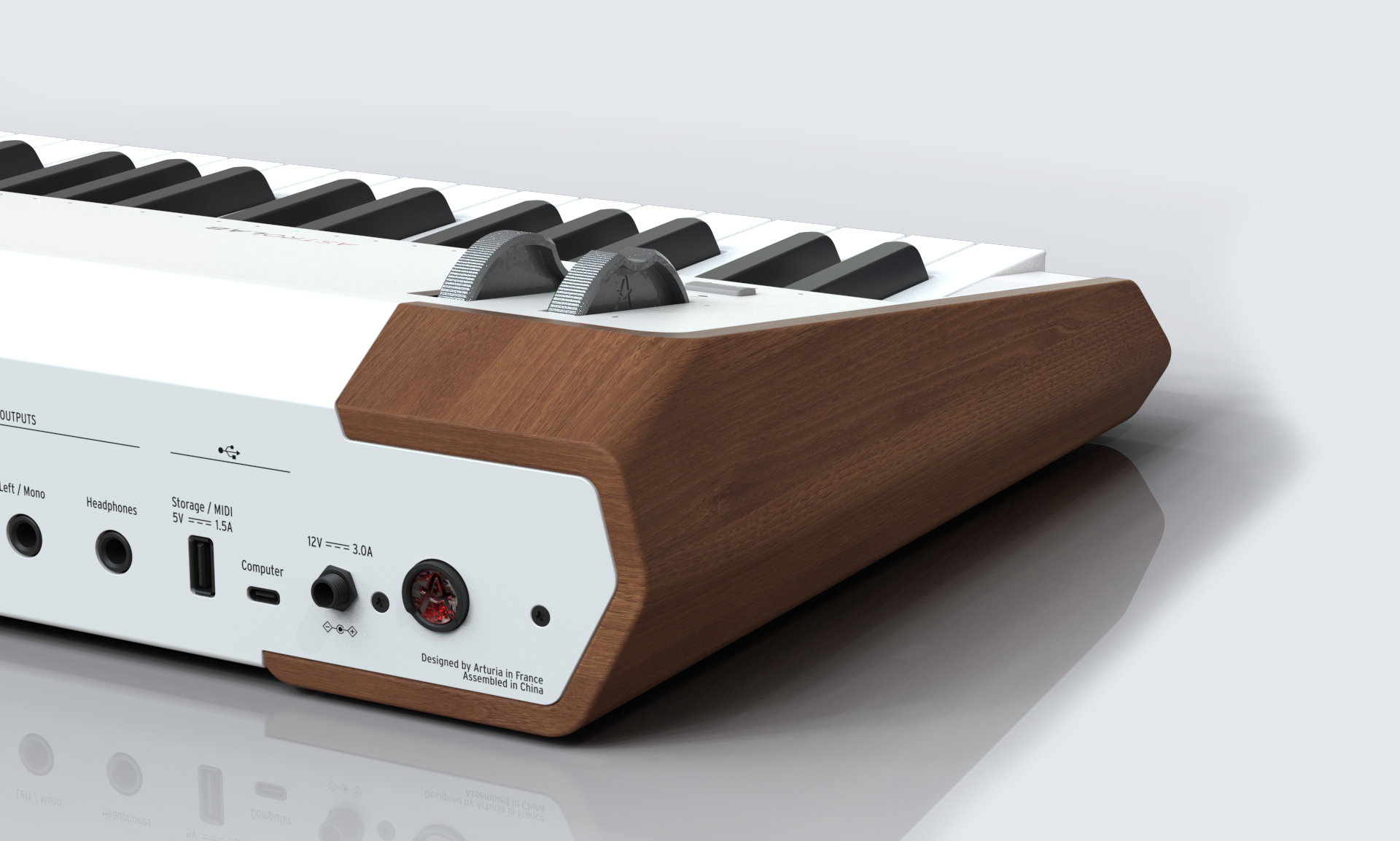
We packaged this innovation in a slim, organic basic design with clearly defined user areas. The design language is friendly, including warm, bright colors and wooden elements on the sides that gently embrace the instrument. The user interface leans slightly towards the user. The rear view is innovative and ensures recognizability on stage. The central, round display is designed as an integrated control unit. It includes a mechanically high-quality endless controller with push function, whose touch quality is reminiscent of control elements from the automotive sector. It combines the complete system navigation in one control element.
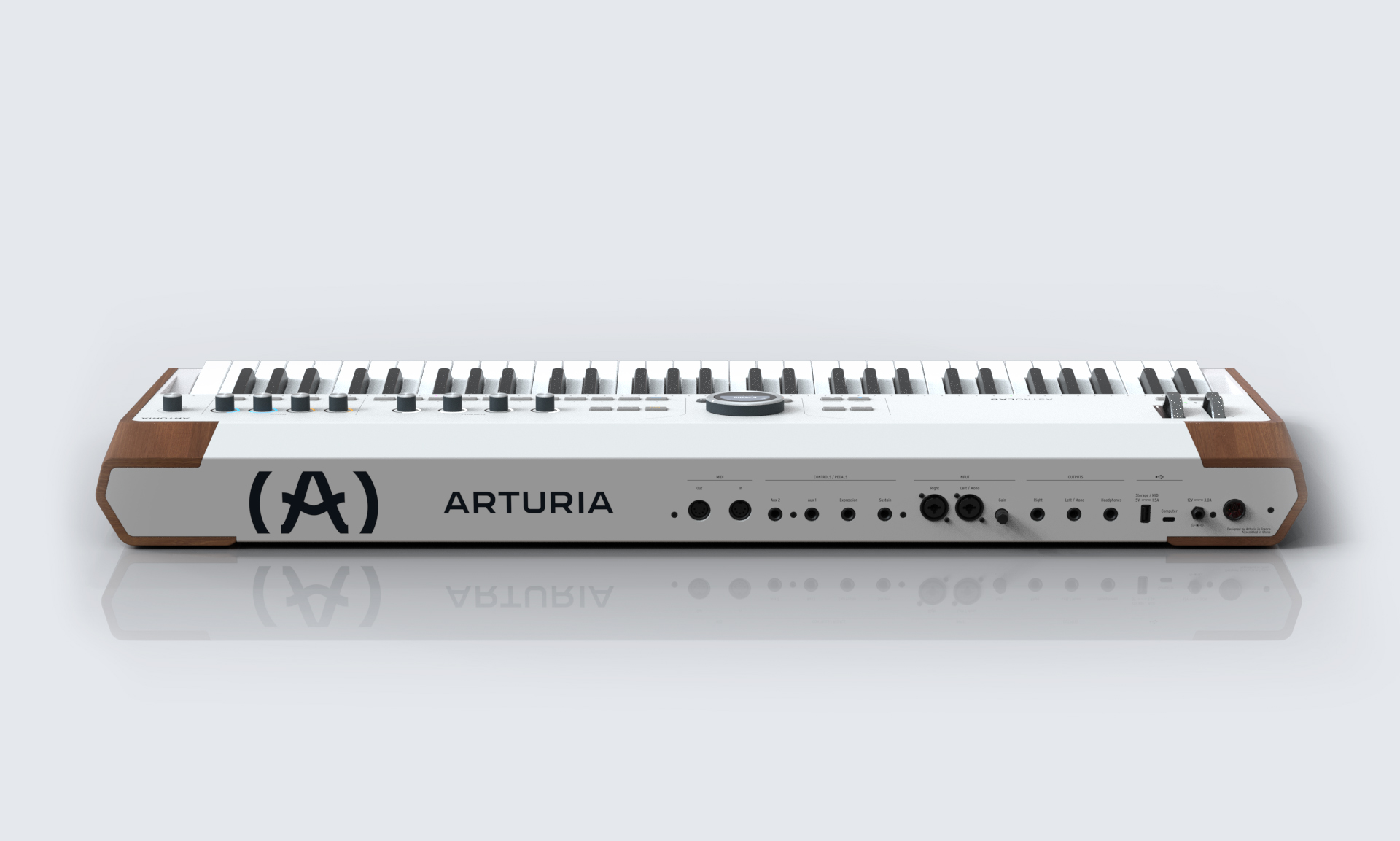
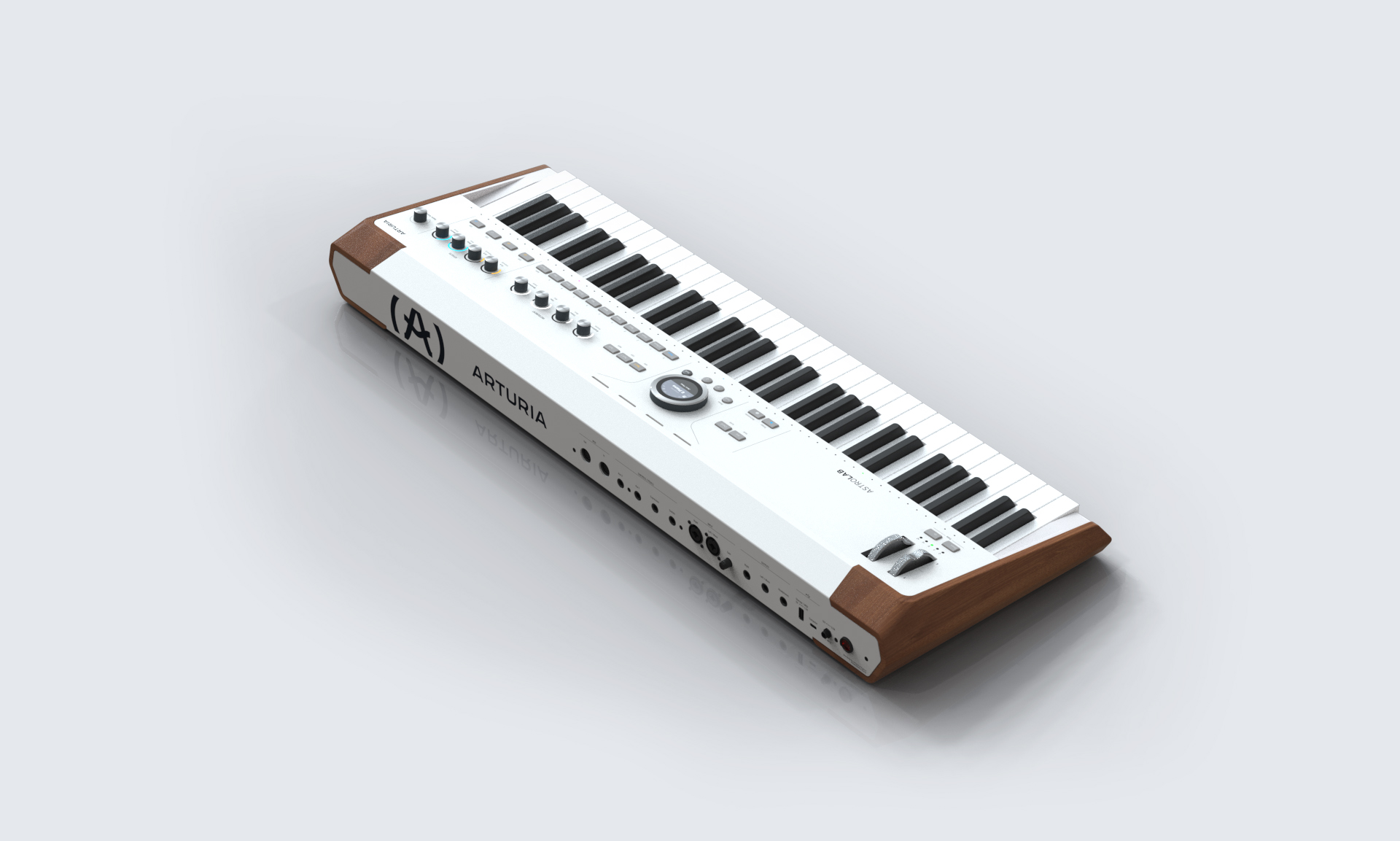
We packaged this innovation in a slim, organic basic design with clearly defined user areas. The design language is friendly, including warm, bright colors and wooden elements on the sides that gently embrace the instrument. The user interface leans slightly towards the user. The rear view is innovative and ensures recognizability on stage. The central, round display is designed as an integrated control unit. It includes a mechanically high-quality endless controller with push function, whose touch quality is reminiscent of control elements from the automotive sector. It combines the complete system navigation in one control element.
Technically, AstroLab is the first modern workstation that offers the complex sound universe of Arturia software instruments as a stand-alone container to clamp under your arm and take with you. Kind of hart, mann!

